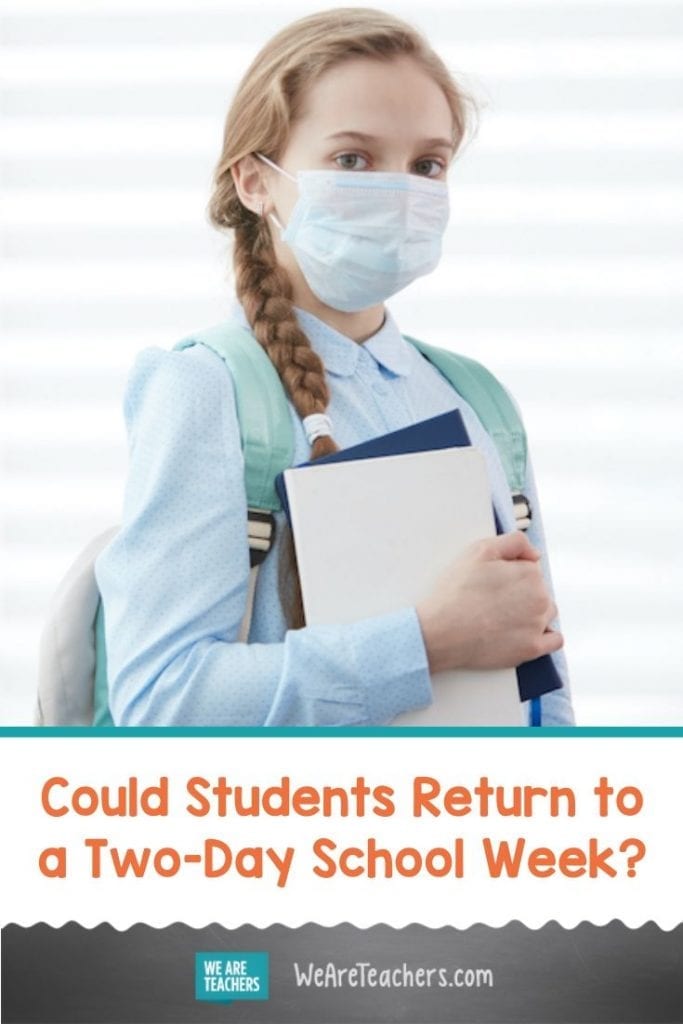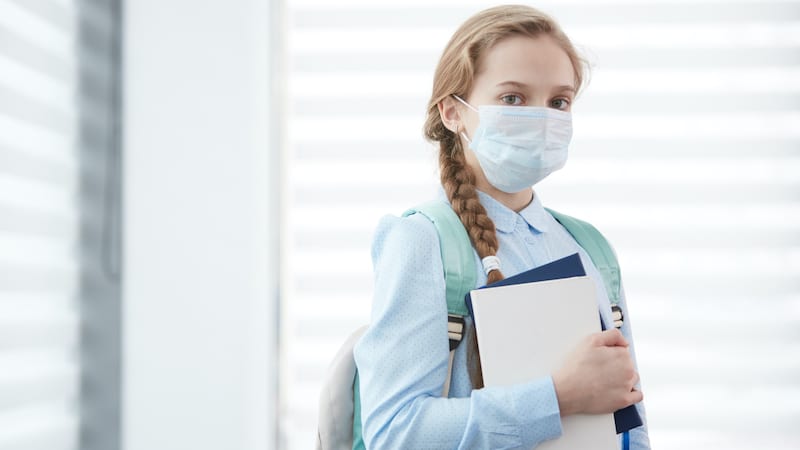Many teachers (and parents) in Ohio found their heads spinning when Governor Mike DeWine made an announcement last week regarding a possible two-day school week in the fall. On May 5, during one of his daily press conferences, he explained the possibility of two shifts of learning. One shift would take place Mondays and Tuesdays and the second would take place Thursday and Friday. Wednesday would be reserved as a cleaning day. And on days students aren’t in class, they would learn virtually.
This is just one option DeWine is considering (with a council including superintendent and principal input). But, it sent some Ohio teachers and parents into a bit of a panic as they try to visualize their life this way. There are many complications that arise from this or any hybrid plan.
A World of Schooling and Social Distancing
DeWine and his trusted medical council, Dr. Amy Acton, have been nationally applauded by leaders and the media for his early and strict response to COVID-19. “I think everyone would like to see schools back in session in August,” DeWine said in the statehouse news briefing. “How could they exist in the world where the coronavirus is still here? How could they get the social distancing? It’s very difficult.”
Each state is considering options, and EdWeek compiled a list of the current statuses. They are varied for sure! Montana started reopening schools last week in counties where there are no active cases. And some states are looking into opening early in July to make up for lost time, such as one potential plan floated by the California governor.
No matter when they open, a lot of school districts are talking about implementing a hybrid schedule. The measures are meant to separate students for social distancing, but it brings up an array of other issues. These concern Ohioans … and the rest of the country.
[contextly_auto_sidebar]
Technology Access and Concerns
Districts have become quite creative in helping their students have access to devices and Wi-Fi. But, distance learning is still far from perfect. One Ohio administrator, Andrea Granieri, works in a school in which 100% of her students qualify for free and reduced lunch. “My biggest concern is for students without high-quality internet service and device. Even though we have been providing a device to those who need one, there are still students without reliable internet,” she said. In the past, this may have resulted in missed homework. But, with the proposed two-day school week schedule, it could mean students miss 50% (or more) of the year’s content.
Francez Curbelo, a parent from Blue Ash, Ohio said that the pandemic and potential solutions exacerbate the already very real education gap. “I keep thinking about how many higher-income families will keep their kids home altogether and hire nannies or private tutors while lower-income families struggle to have access to any educational materials at all. The education gap will get even worse,” she said. Curbelo is not alone in her perspective that the lack of childcare during parents’ return to work, coupled with the expectation that parents “homeschool” their children to keep them on track, is overwhelming.
Childcare: The Most Puzzling Dilemma
Parents and teachers (especially those with children of their own) feel baffled at the expectations. Somehow, as the state slowly reopens, they will be expected to go to work. But what about their children? Childcare is closed. Daycares are closed. Summer camps are closed. And now the potential two-day school week. Online discussions and opinion articles all repeat the same valid, and unsolved concern: how will I work and watch my children, let alone educate them?
Kara Olding, an event planner and parent in Loveland, OH, said, “It’s not good enough. We need live teaching in school.” She and her partner are both full time working parents to two boys going into first grade in the fall. “Are they going to provide me money to hire someone to stay home with my children? It’s such a critical age for them to learn all the basics.”
Another parent of rising first graders, Diana McClelland, calls it a “logistical nightmare” for families. She and her partner both work for a federal agency that allows them to work full time from home, but they are concerned with how long that will last. “They need constant direction with their work. They crave being hands-on … What am I supposed to do with my kids [for half of the week]?” For her, even a 100% virtual learning set up would be a better option, as she then qualifies for a work-from-home exemption to help her kids learn. She also addressed the irony of people suggesting her kids stay with grandma, exposing the older population to more people, especially when “there’s zero way to social distance little kids.”
Does It Really Limit Exposure?
Whether it’s two-day school weeks or some other hybrid, some teachers worry about the risk of exposure. They fear that a teacher could unknowingly pass the virus from one group of students to another. And the teachers still find themselves exposed to all of the students.
High school teacher Ashley Chal, of Lakeside Park, Kentucky feels that virtual teaching may be necessary for families with immunocompromised family members. “Any student going through chemotherapy will not be able to enter a classroom if there is a risk of contagion. Many students go home to parents battling health issues that cause immune suppression, many go him to live with their elderly grandparents,” she said. “We can’t forget school staff consists of humans with issues we have to care about as well. What about teachers who have to send their own children somewhere, maybe even to a grandparent who has an immune disorder? We can’t just weed out those who have issues because that’s discrimination.”
Finding a Path Forward
It seems every day brings something new. The answers aren’t clear, and they may not be for a while. Assistant Superintendent, Dan Von Handorf, said the Ohioan districts will examine the best plans individually. He also calls this phase “learning and brainstorming.”
“Our team is looking at models all around the world as to the best way to deliver the best possible learning environments for our kids, families and teachers while keeping them safe. We are partnering with other local districts, our ESC and surveying parents and teachers to hear ideas of what they want or need for next year.” He said there are pros and cons to DeWine’s plan, such as the ability to keep fostering in-person relationships while social distancing. He also echoes the worried parents’ concerns above regarding daycare and scheduling logistics, as well as the safety of immunocompromised students.
In the end, Ohioans will wait, like the rest of the country, to see what happens next. We will see how the pandemic progresses, and what officials decide in the fall. Unfortunately, the consensus is that there is no perfect, or even “good” solution.
What are your thoughts on a two-day school week? Share in our WeAreTeachers HELPLINE group on Facebook.
Plus, A Look at How Denmark is Reopening Schools.

